
How involved do you want to be with the building process? You can buy a completed lower, put it together your self, or finish the milling process as I did with this 80% arms lower.
THE SERIES
- Part 1: Build an AR-15: The Series Introduction
- Part 2: Build an AR-15: AR Calibers
- Part 3: Build an AR-15: Direct Impingement or Piston Operation
- Part 4: Build an AR-15: Tools and Materials
- Part 5: Build an AR-15: The Lowdown on Lowers
- Part 6: Build an AR-15: Intro to Uppers
- Part 7: Build an AR-15: Barrels
- Part 8: Build an AR-15: Choose The Right Buttstock
- Part 9: Build an AR-15: Choosing the Right Optic
Buy an AR-15 Lower Receiver on GunsAmerica: https://www.gunsamerica.com/Search.aspx?T=AR%20Lower
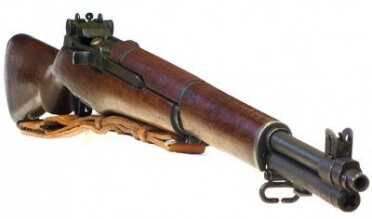
The Garand continues to be popular thanks to groups like the CMP and Call of Duty games. But it wasn’t the logical choice for the wars of the late 20th century.
A brief and reductive history
As the dust settled from WW2, the powers-that-be accepted that our standard service rifle wasn’t the answer for unconventional warfare. The M1 Garand was simply too big, too slow, too limited. Battle rifles were a product of late 19th and early 20th century fighting styles. While there are a lot of die-hard fans of the Garand, most of them would hesitate to carry the weapon into war.
We had fielded the M1 Carbine, which was easier to carry, but the .30 Carbine round had limited range and mediocre ballistic performance. There was a need for a rifle that took the best features of all of America’s sweet hearts and embodied them into one space age blaster.
But tradition dies hard. We had a brief detour with the M14, essentially a Garand-like rifle that used a box magazine and fired a slightly smaller round (.30-06 and 7.62×51). The prevailing belief suggested that we needed a rifle that fired a heavy projectile.
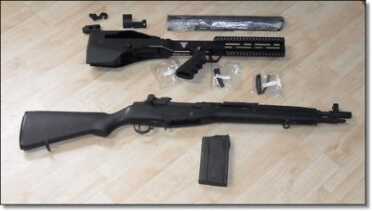
Even with significant upgrades (like the Juggernaut Rogue Bullpup Chassis), the M1A (Springfield Armory’s version of the M14) is a beast. Capable, yes, but in a different class than the slimmed down AR-15.
The AR platform started its life in the labs of Eugene Stoner. What we know as the AR-15 was a scaled down version of the 7.62×51 caliber AR-10 (still keeping with the big round idea). Originally chambered in .222 special, the AR-15 utilized aluminum and plastic–the materials of the space race–to create a weapon that was both lightweight and strong. Though the AR in AR-15 stands for Armalite Rifle, the project was developed by Armalite and then sold to Colt in 1959.
The rifle was sold to civilians as the AR-15 and was heavily marketed to the US military (and eventually adopted as the M16). In 1967, the M16 was officially adopted as the US Military’s service rifle. And it wasn’t a smooth adoption. For more on the controversy surrounding how the M16 launch catastrophically failed, I’d suggest reading C.J. Chivers’ book The Gun.
Rails, shorter barrels, flat top receivers, collapsible stocks, pistons… the weapon system changed as time progressed. One part, though, has remained fundamentally the same (at least until recently). The lower receiver is the heart of this gun and it is the reason why this rifle is still America’s weapon of choice.
So what is a lower Receiver?
This is for all the CNN reporters who butcher these simple definitions. The lower receiver of an AR-15 is a more than a part; it is the single piece that every other part revolves around. Modular rifle design developed to adapt to the changing needs of individual soldiers. Lowers are (supposed to be) universal and the parts that go in and on them are interchangeable. Triggers are held in place by cross pins. Parts like stocks, buffer tubes, pistol grips, and selectors all come together to form the fully functional lower.
[full_width]
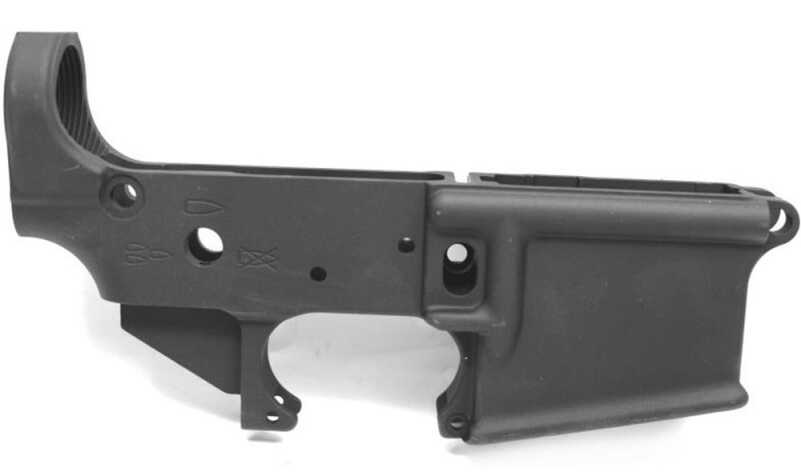
Most lowers are as simple and utilitarian as this DSA. It is a simple aluminum shell that connects almost everything. It is also the serialized piece of the rifle.
[/full_width]
Even though the lower is crucial to the gun (in fact, it is the single piece of the rifle that is considered by the ATF to be THE firearm), the AR-15’s lower is of little significance. It has very little to do with the actual performance of the gun. But at the same time with out the lower you have nothing but a box of useless parts.[/one_half_last]
Why buy just a lower?
In today’s market, most people buy lowers with uppers as complete rifles. But we’re looking at a different route and building the guns to our exact wants and needs. As everything revolves around this one piece, we thought we’d show it some love. There are four main ways lowers are sold:
- Complete rifles (I know of very few people who make their rifling buying choices based on the design of the lower, but it can happen. LWRC, for example, has a stylized lower that has drawn fans)
- Complete lowers (these have all of the guts intact–trigger, controls, etc. Minimal DIY)
- Stripped lowers (while these are ready to be built, they allow for more customization)
- 80% lowers (for advanced DIY enthusiasts–more on these below)
Buying a complete lower
Buying a complete lower is a great way to go if you don’t have the tools or know-how to assemble your own gun. You can get them from your favorite manufactures. Palmetto State Armory is popular with those looking for reliability at a low price. With endless options and the Internet at your disposal, you can find a lower that is built exactly the way you want it. These lowers can be purchased online and then shipped to your local FFL for transfer on the old 4473 form you would use to buy any gun. If you are looking for some semi-custom choices, but are not ready to dive into amateur gunsmithing, then this path is for you.
Buying a stripped lower
What if you want more options? Say you like the looks or feel of one lower, but want a specific design to the trigger shoe on your two-stage trigger, and no one is selling that as part of a package deal? Buy a stripped lower and build it yourself. This is the best way to go if you want to build a rifle with only the best components.
It’s also a great way to go if you want to build a rifle on a budget. Stripped lowers can be had for a song–sometimes below $50. As the lower isn’t immune to the whims of firearms fashonistas, they can range into the hundreds of dollars. For your first build, keep it simple. As you learn the ins-and-outs of controls, mag-well shapes, the relative weights of component parts, then you can swap out the simple lower receiver for one that does exactly what you want.
Head my warning though–if you are looking to build a budget gun and don’t have much experience, assembling a lower can be a daunting task. Know your skill level. Remember that these are modular in design, and that parts are supposed to fit. Don’t remove material. Don’t force anything. Gunsmiths aren’t cheap. Check out the options like the DSA pictured above–clean, simple, priced right, and completely customizable.
A quick detour into material construction
While we’ve been looking at the basics of how these are sold, we’ve skipped over an important aspect of design. Most are built from varying grades of aluminum. The material is strong enough, easy to work, doesn’t rust, and light. And if it does break, the part is easy to replace. Yet there’s more to consider.
Cast lowers: some lowers are milled out of aluminum that has been melted and poured into a basic mold. While expedient, this method produces a loose crystalline structure within the aluminum. Is it strong enough? Yes. Is is the strongest method? No.
Milled lowers: while most lowers are milled at some point in their construction, some are milled from billets of aluminum. A billet is just bar stock. The strength of the bar itself (which is determine by how it is made) determines the strength of the final product. This method often produces a stronger lower than simple casting.
Forged lowers: if you want something more, look to forged lowers. These are made from billets that are hammered into molds, or compressed under pressure. This forging is then milled. The compression of the crystalline structure makes this one of the strongest methods of construction.
If you are looking at aluminum, consider the end cost. More strength equals more production time. Is it worth it? Maybe. It depends on the intended purpose of the gun. If you want even more strength (or even less) there are other options. What other materials are common? Just about everything.
[full_width]

[/full_width]For those who want an AR to look at, I’d suggest Turnbull’s TAR-15. It is made of steel. That’s kind of like saying the Hope Diamond is made from coal. Turnbull makes some pretty guns.
If you’d rather not lug around ferrous metals, you can try carbon fiber. Tegra Arms makes light-weight lowers out of our generation’s space age materials. The one above is a carbon fiber composite, which means the polymer is reinforced with an incredibly light and durable material.
Or maybe you want titanium? You know–why not have a rifle that will outlive you, and your kids, and your kids’ kids…. These will likely have the same service life as a 1950’s Russian AK. Nemo Arms, a company that pushes the limits on the AR pattern rifles, has an AR-10 made from titanium. Why not an AR-15?
Maybe because it is overkill. Plastics work fine. Polymer lowers have been a thing of novelty in the past, but in recent years polymer technology has advanced to a point that the polymer lower is a viable option. These lowers can handle serious use and cost even less than a stripped aluminum lower. Tennessee Arms Company is a leader in this field as they have developed an entire line of polymer lower receivers reinforced with marine grade brass where strength is necessary. These lowers are inexpensive, hold a lifetime warranty, and are about as cool as they get. And some hold the opinion that the plastic lowers flex where aluminum lowers crack.

The polymer reacts better, we’re told, than some metals. It has more elasticity, and handles recoil energy without cracking. And the jig shows what needs to be removed to make it work.
Buying a 80% lower
https://www.80percentarms.com/collections/lower-receivers
Lowers that are serialized and considered by the ATF to be firearms must be transferred through an FFL, at least originally. What if you want to skip that step? 80% lowers may be the best option. If a lower is only 80% complete, it is not yet a firearm. Therefore, it requires no special paperwork. It can be bought from a manufacturer and sent directly to you.
You finish the last 20%, and make it into a functional lower receiver. How hard is that to do? It takes a bit of skill, but it is hardly an advanced project. If you can operate a drill press and are confident in your ability to measure things correctly, the job is easily accomplished.
They come in polymer, from folks like Polymer80 and in Aluminum from 80percent arms.
Read our reviews of the 80% build processes here:
[full_width]/blog/polymer-80/[/full_width]
[full_width]/blog/80-arms-billet-aluminum-lower-build-no-milling-machine-needed/[/full_width]
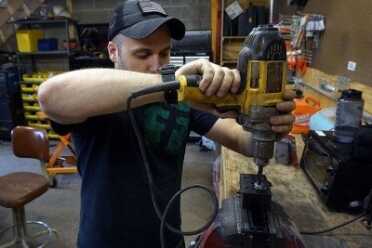
Once you get a handle on the basics, you may want to mill your own lower. Aluminum is harder to cut than plastic.
Buying an 80% lower receiver is the most involved and cost prohibitive option on this list. Choosing to take on the task of manufacturing your own lower receiver is more than novel. It takes a decent amount of time, the right tools, and sufficient knowledge of how to use those tools. This road generally costs more to travel down. A blank 80% lower can cost you any where from $50- $200, and then you need to figure out how you will manufacture the rest of the gun. A jig will cost you around $150 and the tools required for the bare minimum would run you about another $200. Even if the cost is considerably higher, manufacturing a lower receiver begins to become economical once you acquire the tools. Companies like 80% Arms have simplified this process and made it a task that most can complete with great success.
The flip side to this coin is that the lower you manufacture is truly your gun. You are the manufacturer. It is un-serialized, and something you can show off to your friends for years to come. Building out a 80% lower does require time and a bit of skill, but if you are reasonably good with power-tools, there is no greater reward than building a gun around a lower receiver you milled yourself.
In the end
Once you’ve decided on how much time and work you want to put into a lower, and what materials you are looking for, you can fine-tune the process. While most lowers are the same basic shape, there are nuances that can be important. Do you want or need a left-handed design? A right hand orientation with ambidextrous controls? Are you looking for a wider mag well to make loading easier? Would you prefer grooves on the front of the mag well for support hand grip? How much decoration do you want on the lower itself? Do you risk sacrificing durability for weight reduction and go with a skeletonized lower that is feather light?
The AR-15 is everything it can be because of the lower. There have never been more options than there are today. Find what appeals to you and be honest with yourself on what you are comfortable and capable of taking on.

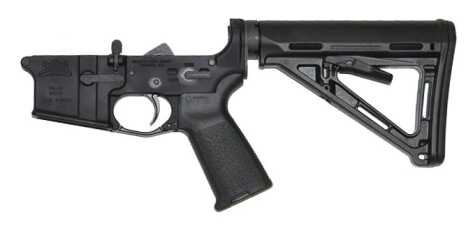
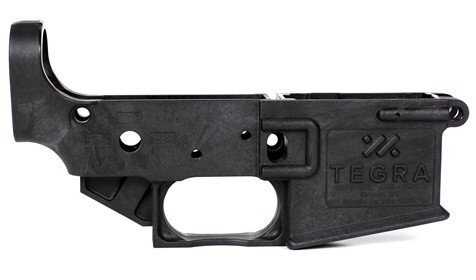
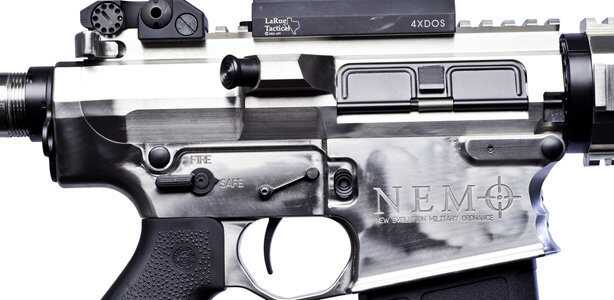
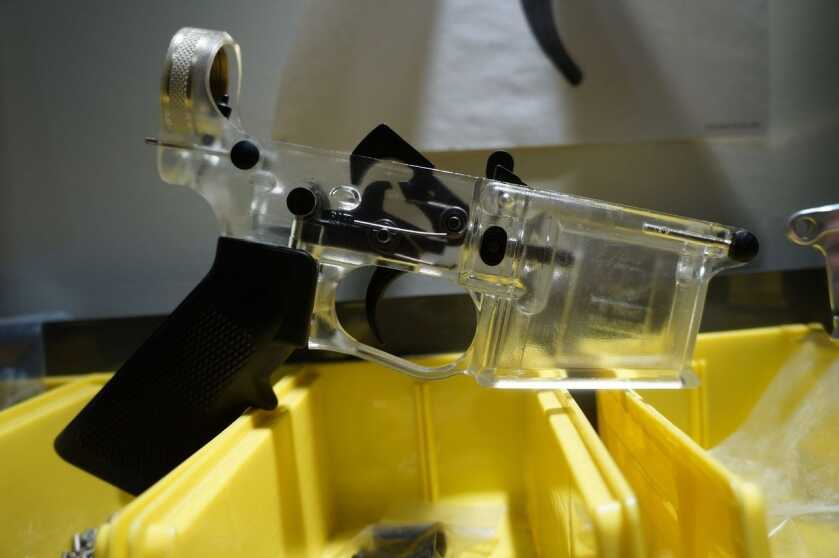
So can u buy lowers with different magazine sizes so i can mag different sizes of bullets like for ex if i have lets say a .300 mag upper can i get a lower that can take the mag so i dont have to load it individually like the 50 bmg upper
I built my first 80% just a few days ago. I have never done such a project nor built any of my firearms. I always paid to have it done. I bought the poly 308 WARRHOG with jig and bits. did all kinds of research for a good two weeks before I gave it o go. I laughed at myself after because of all the time I spent watching countless videos and blogs. hour and a half later I have a functioning lower. it was absolutely an easy accomplishment. do not stress yourself out. it is easy!!!
cordless drill, 10″ drill press and a slide vise. slide vise is what made it so easy. now building my second.
And yes I have shot it. couple hundred times
Building your own AR-15 is always more interesting than buying a complete build. It is so interesting to search forums for different opinions, to look for parts, to analyze different AR-15 setups. Try to build your own AR-15 and you will have a lot of fun.
I’M WITH KEITH, BUT I FIND OUT THAT @ 80% LOWER THE 308 BUILD WILL ONLY PIN UP TO THE REM OR
ROCK RIVER UPPERS, WILL YO RUN THE 80% BUILD WITH THE 308 IN MIND?
SMITH4570
Let’s also talk about how the 5.56 x 45 with a full metal jacket M-4 is semi effective past ranges of 120 meters and how the M-16 is semi effective at beyond 200 meters. Thank goodness the Marines adopted a hollow point round with the 5.56 x 45 to increase the effectiveness of the round.
I like soft point 7.62 x 39 round, .300 Blackout in super sonic, 6.8 x 43 and the 7.62 x 51 rifle cartridges. These rounds with the right firearms and right shooter are effective to at least 300 meters. The 7.62 x 51 is effective out to beyond 500 meters.
Obviously have no idea what you are talking about. All those rounds you mention are effective well past double the range you we quote.
X2 on that…as a former grunt I can tell you the ar15 has a point target range of 500 meters.
Actually the M855 is not all that great since its pretty tough, designed for the SAW it was intended for penetration. The 55 gr VN era M193 is really nasty out to 300 yards or so since it breaks at the cannelure and after a little penetration makes a wound much like a SP/varmint bullet would, its very lethal. Look into the M262 Mod 1 its nicely lethal and the Hornady TAP is too according to what I have read from the “sand box”. The BTHP bullets they use are both “legal” since the HP is for bullet balance and accuracy. But these bullets also tend to have thin jackets and thus break up easily. Good stoppers as a result or so I have read. Hornady’s testing of their ammo shows the 75 gr TAP makes a nasty wound channel in tests.
Boy that TAR 15 sure is pirdy !!!
That said, My Palmetto State Armory complete lower in .308 was a great buy and more affordable than all other options I looked at for two years. I’m not sure about their AR 15 type lowers assuming them to be mil spec, but the Palmetto State Armory .308 platform is pretty much a proprietary type system which seems to be the norm in AR 10 land. It took a little work and one trip back to the factory to make the whole piece run as expected but the total amount invested was worth the extra effort.
Don’t forget the option of using a GHOST GUNNER Mill that will do all the precision milling required on a 80% Lower.
The unit cost is $1200 +/- . If you buy one then loan it to friends so they can do their own (you can’t make theirs w/o a Lic). As an extra measure of caution, use the mill at their houses. A business ran into ATF trouble letting customers use shop CAD/CAM machines to finish 80% purchased in their shop. You can horse trade the rental and recoup your investment plus some extra. It would be great if the tool rental businesses would stock it with a preprogramed computer.
Or instead of using a Ghost Mill, which would be wonderful and nice, one can just use a dremel tool and some care and time.
Coupled with a hand drill, it is easy to complete 80% lowers. I have done a few of them this way and all are tight, shoot well and look as good as anyone else’s completed lower. 🙂